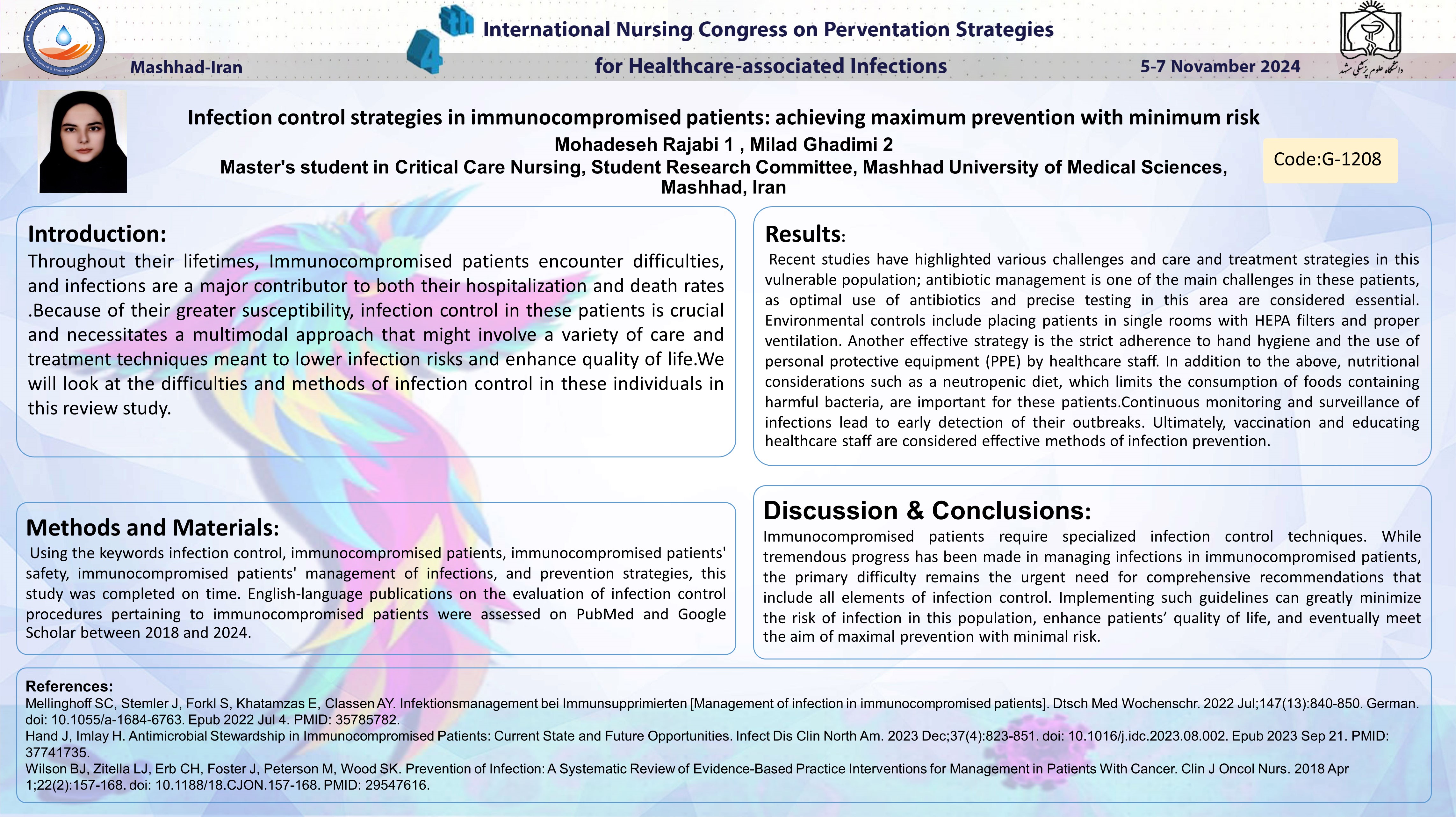راهبردهای کنترل عفونت در بیماران دارای نقص ایمنی: دستیابی به حداکثر پیشگیری با حداقل خطر
کد: G-1208
نویسندگان: محدثه رجبی © ℗, میلاد قدیمی
زمان بندی: زمان بندی نشده!
دانلود: دانلود پوستر
خلاصه مقاله:
خلاصه مقاله
Introduction: Throughout their lifetimes, Immunocompromised patients encounter difficulties, and infections are a major contributor to both their hospitalization and death rates.Because of their greater susceptibility, infection control in these patients is crucial and necessitates a multimodal approach that might involve a variety of care and treatment techniques meant to lower infection risks and enhance quality of life.We will look at the difficulties and methods of infection control in these individuals in this review study. Method: Using the keywords infection control, immunocompromised patients, immunocompromised patients' safety, immunocompromised patients' management of infections, and prevention strategies, this study was completed on time. English-language publications on the evaluation of infection control procedures pertaining to immunocompromised patients were assessed on PubMed and Google Scholar between 2018 and 2024. Findings: Recent studies have highlighted various challenges and care and treatment strategies in this vulnerable population; antibiotic management is one of the main challenges in these patients, as optimal use of antibiotics and precise testing in this area are considered essential. Environmental controls include placing patients in single rooms with HEPA filters and proper ventilation. Another effective strategy is the strict adherence to hand hygiene and the use of personal protective equipment (PPE) by healthcare staff. In addition to the above, nutritional considerations such as a neutropenic diet, which limits the consumption of foods containing harmful bacteria, are important for these patients.Continuous monitoring and surveillance of infections lead to early detection of their outbreaks. Ultimately, vaccination and educating healthcare staff are considered effective methods of infection prevention. Conclusion: Immunocompromised patients require specialized infection control techniques. While tremendous progress has been made in managing infections in immunocompromised patients, the primary difficulty remains the urgent need for comprehensive recommendations that include all elements of infection control. Implementing such guidelines can greatly minimize the risk of infection in this population, enhance patients’ quality of life, and eventually meet the aim of maximal prevention with minimal risk.
کلمات کلیدی
Infection control، Immunocompromised patients، Management of infections in immunocompromised، Immunocompromised patients' safety،، Prevention
